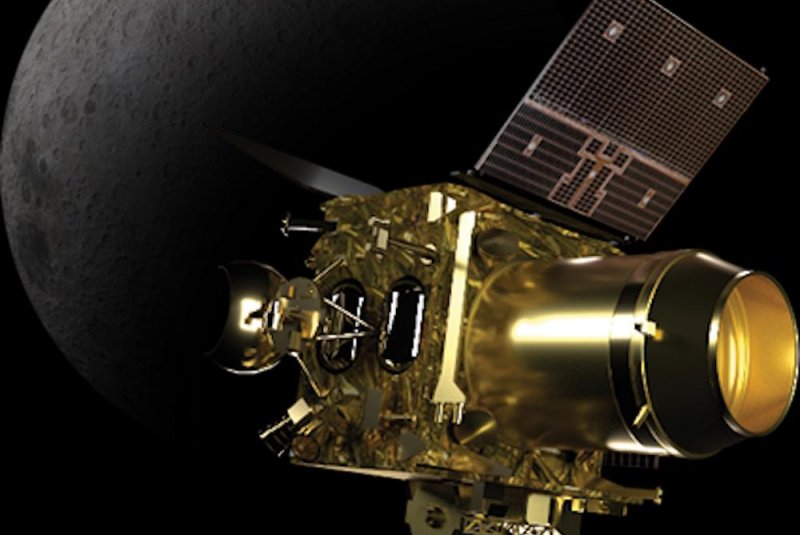India's Chandrayaan-2 spacecraft houses a lander and rover, which are scheduled to touch down on the moon's south pole in September. Photo by ISRO
Aug. 13 (UPI) -- On Tuesday night, Chandrayaan-2 spacecraft will leave Earth's orbit and begin making its way toward the moon.
Early Wednesday morning, after leaving Earth's orbit, engineers with the Indian Space Research Organization will direct the spacecraft to perform an important maneuver called Trans Lunar Insertion. The move will put the spacecraft on a trajectory that will put the probe into orbit around the moon on August 20.
"Subsequently, we have planned to have a series of maneuvers around the moon and finally, on September 7, we will be landing on the moon near its south pole," Kailasavadivoo Sivan, ISRO chairperson, told reporters.
India's Geosynchronous Satellite Launch Vehicle launched Chandrayaan-2 in July. The small probe, which houses a lander and rover, has been circling Earth for the past few weeks. The probe used its propulsion system to slowly increase its orbital distance from Earth, preparing for Tuesday's escape from Earth's orbit.
Next week, as the probe approaches the moon, the propulsion system will slow the spacecraft's speed, allowing it to be captured into orbit by the moon's gravity.
Once in orbit around the moon, the probe will release the lander, Vikram, which will perform a series of breaking maneuvers to execute a soft landing on the south polar region of the nearside of the moon. After landing, Vikram will release Pragyan, the rover.
The mission's lander is named for Vikram Sarabhai, considered the father of India's space agency and an important figure in the development modern science, physical research and atomic energy. Sarabhai died in a plane crash in 1966.
"Today, on his birth anniversary, we remember the exemplary Dr. Vikram Sarabhai," Narendra Modi, India's prime minister, wrote on Twitter this week. "His contribution to Indian science and innovation is tremendous. His efforts ensured India made rapid strides in science and space."
Though India's ambitious second moon mission is mostly a proof-of-technology mission, the spacecraft is also outfitted with instruments to perform some basic science. The lander and rover will help scientists study the south polar region's topography, mineralogy and surface chemical composition.















